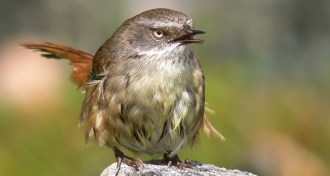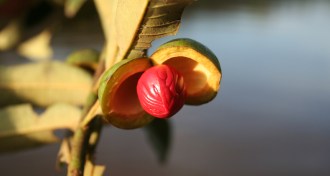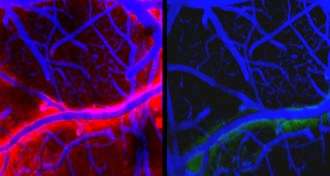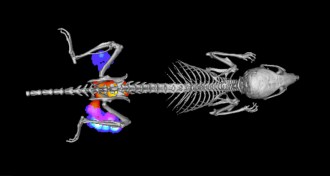Life
Sign up for our newsletter
We summarize the week's scientific breakthroughs every Thursday.
-

-
 Neuroscience
Neuroscience3-D effects may require one eye only
Peering through a peephole can bring flat images to life.
-
 Plants
PlantsJust a few tree species dominate Amazon forest
The Amazonian rainforest, known to be one of the most species-rich areas on the planet, is actually dominated by a only few tree species.
By Science News -
 Animals
AnimalsAmphibian killer forces immune-cell suicides
Fungal menace to frogs and their kin shuts down key parts of the animals’ defenses.
By Susan Milius -
 Neuroscience
NeuroscienceSleep allows brain to wash out junk
Discovery of fluids flowing in mice while they slumber could lead to better treatments for Alzheimer’s disease.
-

-
 Neuroscience
NeuroscienceNFL players’ brains take a hit
Brain scans reveal hidden abnormalities in retired football pros.
-
 Animals
AnimalsYoung chimps catch human yawns
Juvenile chimps yawn contagiously when they see humans do it, a response that could signal the animals are developing empathy.
-
 Animals
AnimalsLurking males lead to hard-to-fertilize mouse eggs
Mixed-sex society raises resistance to sperm in what may be a long-running arms race between the sexes over fertilization.
By Susan Milius -
 Life
LifeScorpion genome decoded
An analysis of an arachnid’s DNA reveals how the animal survives its own venom.
-

-
 Life
LifeFlashy drug spotlights infection
Doctors may be able to watch for invading microbes with a fluorescent antibiotic.
By Beth Mole